
Systemic Ageing Policies - a Global Problématique as an example for Systems Sciences and Systems Practice with Cybernetics and Ancient-Modern East-West Systems Thinking 系統老齡化政策
– 一個全球性問題的古今中外系統科學與系統應用
Active and healthy ageing has been investigated by the World Health Organisation WHO and governments in many countries. If anything is an open system, then the Elderly system could not be closed! Problems that have arisen from the reductionistic close system perspective include age discrimination, elder abuse, capitalism biases against socialism, youth biases against elderly, social isolation, city migration, elderly rights vs youth duties, and such like. It follows that we need to tune the boundary openness and investigate the possible and important connection between the Elderly system and other systems, so that new systems can emerge and evolve themselves. A healthy society would require tuning policies for the dynamic balance among different sub-systems and the environment, and for the emerged systems to evolve healthily. We would like to compare the two possible solutions from a reductionistic approach and that of a systemic approach. This would involve systemic wisdom from different SIGs to work together to address issues that arise from the current balancing points of different Yin-Yang spectrums, and tune them with Cybernetics and Ancient-Modern East-West Systems Thinking strategies. Possible spectrums could be the elderly-youth spectrum in population system, retirement-workforce spectrum in society, duties-rights spectrum in ethical perspective, ancient-modern spectrum on culture establishment in societies. This would involve concepts from Confucianism, Buddhism, Taoism, and Traditional Chinese Medicine. The human body will fail eventually with ageing, but systems scientists have the responsibility to implement systemic strategies that could help the elderly to fail gracefully and systemically. Elderly healthcare is not only about the physical body but also involves Mental, Emotional, Behavioural, and Spiritual aspects. Innovation is the process that arises from the emergence of functional new systems supported by various stakeholders-observers who could realise the new connections between different existing sub-systems. Therefore stakeholders-observers’ involvement and support is of utmost importance. Systemic analyses and systems practices can reflect a clearer picture of the whole problem. This allows us to implement strategies with a much better direction, and to discern effective strategies that are already implemented in a systemic way albeit unintentionally. Such an active and healthy systemic ageing proposal could well be applied to ISSS itself.
Keywords
Active and Healthy Aging, Ancient-Modern East-West systems thinking, Five-elements Society System EMSCE: Economics-Management-Social-Cultural-Environmental, Confucianism – Buddhism – Taoism – Traditional Chinese Medicine, Mentor-Successor Education System
Active and healthy ageing has been investigated by the World Health Organisation WHO and governments in many countries. Lately, Active Ageing has been again analysed systemically as a Global Problématique (SANKARAN 2018)(CHROUST 2018)(WONG 2021c). If anything is an open system (Bertalanffy 1969), then the Elderly system could not be closed! Hence we need to investigate the possible and important connection between the Elderly system and other systems. A healthy society would require a dynamic balance among different sub-systems and the environment with careful tuning of the openness of the boundary to provide both freedom and stability.
We would like to investigate the possible solutions for the problems that have arisen from the reductionistic close system perspective, including age discrimination, elder abuse, capitalism biases against socialism, youth biases against elderly, social isolation, city migration, elderly rights vs youth duties, and such like.
Frequently suggested solutions so far include more government funding, more subsidies, more emphasis on elderly human rights, and such like. However, we wish to also investigate the more systemic perspectives and strategies that involve a shift of the dynamic balancing points among systems to improve the overall performance of the human society system. This would involve systemic wisdom from different Special Integration Groups SIGs of some international societies such as International Society for the Systems Sciences ISSS or International Federation for Systems Research IFSR. SIGs may include Action Research, Balancing Individualism and Collectivism, Systemic Approaches to Crises and Disasters, Health and Systems Thinking, Organizational Transformation and Social Change, Science, Spirituality and Systems Science, Systemic Ethics, Designing Educational Systems, Student SIG, and others. Systemic scientists from different SIGs could work together to address issues arising from the current balancing points of different Yin-Yang spectrums. Such spectrums would involve two extreme opposite sides and all the possible balancing points in between. These sets of points would suit different situations of different problems. For example, playing different kinds of music (system) would require a different setting of the different spectrums on the equalizer. Playing the same music in different surroundings (Environment) would also require different spectrum settings on the equalizer, as shown in exhibit 1.
Introuction
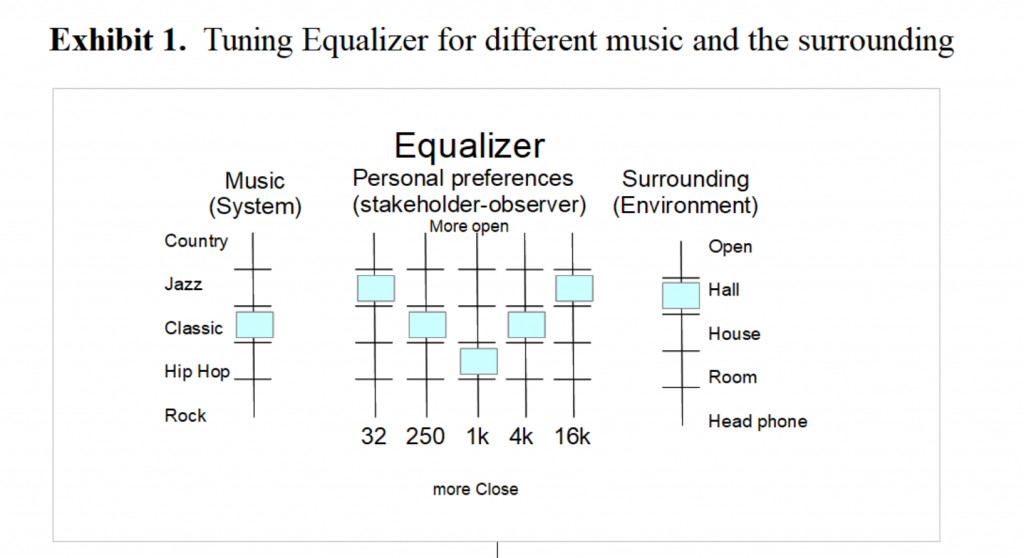
Yin-Yang spectrums included in the Active Ageing problem would be the elderly-youth spectrum in population system, retirement-workforce spectrum in society, duties-rights spectrum from the ethical perspective, and ancient-modern spectrum on culture establishment in societies.
Balance between super systems and sub systems involving the whole local-national-regional-global structure forming the Levels-spectrum as shown in exhibit 2, should also be considered. By comparing the common reductionistic problématique solutions with those of systemic problématique solutions, it would help decision makers to have a better understanding of systems sciences and systems practice.
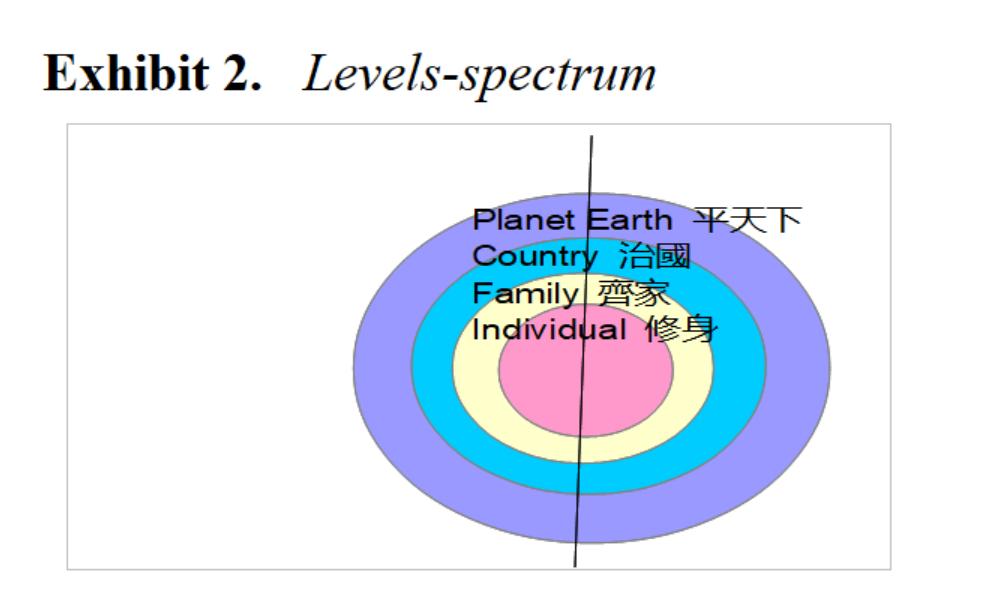
2 | Ageing – A Global Problématique
Ageing is unavoidable since the record of human history. While some animals such as lions dump their elderly into the environment, other animals such as monkeys look after their elderly and let them remain within the society system. Basic units of couple, family, race, neighbourhood were employed in the ancient times to look after the elderly. However, with societal value biased much more towards the freedom and privacy side and away from the stability and sharing side (stability-freedom, sharing-privacy), these basic group-units are gradually disintegrating, and hence the elderly becomes a new Problématique in modern city based society. Thus some new kinds of group units are required.
Many strategies and policies have been implemented in different countries. Understanding whether the strategies belong to reductionistic approaches or systemic approaches would help us improve our efficiency, efficacy and other similar goals.
3 | Ageing Policies – A Reductionistic Approach 1+1=2
Different stakeholders-observers always try to gain more shares of the same cake because 1+1=2 at all times in their perspective. These stakeholders-observers support different perspectives and would usually try to maximize their shares through controlling each other. However, AIC systems theory (SMITH 2008) suggested that control, negotiation (influence) and adaptation (appreciation) should be employed depending on the situations. In this section we try to investigate the problem from five possible perspectives as shown in exhibit 3.
Exhibit 3. Five possible perspectives to investigate problems
31 | Economical perspectives to maximise profit
The goal of these perspectives is to balance the budgets that would balance the interests of different groups of people. Money, goods and services, profit or loss would be the major considerations. Rich population would like to remain rich! If the elderly did not work hard enough to accumulate savings while young, they deserve no more! Information Technology innovations should be employed to increase efficiency and efficacy through the use of hardware, software and communication. Such perspectives alone would cause wealth inequality and this situation is getting worse as our world is currently heavily biased towards Capitalism. Maybe it is time to consider tuning the system back towards the Socialism side of the socialism-capitalism spectrum.
32 | Political perspectives to maximise re-election
The goal of political perspectives is to retain power and control, and entice the stakeholders with fiscal and monetary policies. People in power naturally would like to remain powerful. They would please the elderly voters if their political situation remains influential.
33 | Cultural perspectives to maximise ethical values
Constitutional dreams of a race, country, or planet would carefully define the cultural perspectives. Dreamers would like to keep their hope achievable. Brotherhood, neighbourhood, family relationship (elderly-youth relationship), couple relationship should be instated at all cost.
34 | Environment perspective to maximise the use of natural resources
Land (unusable-usable), minerals (mixed-pure), Oxygen-pollution, food-rubbish, transportation-containment, Water pure-polluted, trees-waste, animals-death could be the spectrums of natural resources that are of concern to the environmentalist, who would like the environment to be sustainable and thriving. Population and individual consumption should be minimized. Allocation of resources for the elderly should be kept low, for the sake of saving resources for the next generation.
35 | Society perspectives to maximise the stability of the country
The main goal of the society perspectives is to stay together. Spectrums of freedom-stability, rights-duties, togetherness-separation are their main concern. They see the elderly as part of the society and hence should be well looked after.
Exhibit 4. Reductionistic approaches with closed boundary – close system analysis
Reductionistic approaches in modern sciences assume a totally closed boundary between the object of interest and the environment, while assuming totally open boundary for different sub-objects within the object of interest. As illustrated in Exhibit 4, two waves are allowed to interact completely without boundary and would result in a new wave of interference. However the waves outside the scope of the experiment are not allowed to input into the reductionistic analysis and nothing is allowed to export into the environment, while only the observer is allowed to observe the output.
Reductioistic governance tends to isolate the elderly as a separate part of the population to implement strategies. That is, to maintain a closed elderly system and supply resources such as money, human resources including administration personnel, social workers, warmth-food-shelter-transportation 衣食住行, entertainment 吃喝玩樂, body-mind-spirit 身心靈 healthcare with medicine-information-religion. Such policies would fulfilled the lower half of the Maslow’s hierarchy of needs 馬斯洛需求層次 (MASLOW 1943)(ZUO 2018 p295), or the first few fetters of self-illusion in the teaching of Buddha (MAHATHERA 1982) (UBEYSEKARA 2018).
Different modern Information Technologies with hardware, software, and communication systems would also be employed such as climate change strategies, smart city structure, robotics caring system and such like.
A more neutral governance would try to find a balancing point between the interest of the different stakeholders-observers supporting these five proposed perspectives. Such an approach seems to include mostly known perspectives and hence is regarded as holistic thinking. However, we will show in the next section that there is much more in systems thinking. Systemic policies might also provide solutions for the upper half of the Maslow’s hierarchy of needs, or the last few fetters of self-illusion in the teaching of Buddha.
4 | Systemic Ageing – Systems Thinking and Systems Practice
The human body will fail eventually with ageing, but systems scientists have the responsibility of implementing systemic strategies that could help the elderly to fail gracefully and systemically. So the questions are: What is Systems thinking? What is Systems Sciences? How to do Systems Practice?
41 | System of Interest–Boundary–Environment – from Taichi Yin-Yang to 13 elements structure
System of Interest can be understood as the object of interest, and in our case, the Elderly system. The common understanding of Environment could be forest, energy, air, water, and the planet Earth. In systems theory we usually understand Environment as the surroundings of the systems. In our case of Elderly system, the Environment could be the rest of the population and the common environment. (Uexküll 2015) suggested how living beings perceive their environment(s) and argued that organisms experience life in terms of species-specific, spatio-temporal, ‘self-in-world’ subjective reference frames called Umwelt, being translated as surrounding-world, phenomenal world, self-world, environment. That is, the Environment should be classified subjectively according to the structure of the System of Interest, because the environment contains all the possibilities for the system. The Boundary separates the System of Interest from the Environment. The Interest–Boundary–Environment form the basic structure in systems thinking as shown in Exhibit 5.
A close system analysis is the traditional reductionistic approach where the boundary is totally closed. Systems thinking is the approach where the boundary is allowed to be opened, and Systems practice is largely about the tuning of the openness of the boundary.
Exhibit 5. System of Interest–Boundary–Environment structure
Systems Thinking is the study of the object in which you are interested, both internally and externally, but most importantly superficially on the boundary that differentiate the internal and external. In Chinese thinking, it is named as the Taichi Yin-Yang combo 太極陰陽體系 corresponding to the Boundary External-Internal combo respectively (WONG 2007). The boundary could facilitate the input and output for the object. Chinese thinking uses the concept of Five-elements 五行 consisting Wood-Fire-Earth-Metal-Water to correspond to Input-Facilitation-Internal-Output-External respectively. Note that the Five-elements 五行 is not a one to one matching with the Indo-European Five-elements of Ether, Air, Fire, Water, Earth suggested by Ayurveda and Aristotle.
Internal systems thinking is to observe the structure and function 整體體用 of the object of interest, its parts and their corresponding properties 局部體用, and most importantly on how the parts are connected together to achieve the structure-function of the system of interest. When the observation is studied through time, we name the changing object as System 分合:體用. The Five-elements of Wood-Fire-Earth-Metal-Water would correspond to Parts-Connections-Structure-Function-Properties respectively (WONG 2016a). Exhibit 6 tried to show the different concepts of holistic between internal systems thinking and reductionistic thinking. Connections between parts are one of the main theme in systems thinking and different connections would cause different systems or structures to emerge. The R in DSRP systems theory refer to Relationships/connections (CABRERA 2018) and we divide them into internal connections within the system, and external connections with the environment. Reductionistic thinking would group the elderly (parts) as defined (properties) together and form the elderly group (object of interest) which would have some special function. This group represent the whole of elderly and need resources to maintain. Internal systems thinking realize the importance of connections between individual elderly, and would allow new system (structure) to emerge. For example, connecting the junior elderly in their 60s with the senior elderly in their 80s together would allow the mutual elderly care systems to emerge, allowing the junior to take care of the senior within the elderly system. Internal systems thinking require the process of emergence to be holistic thinking.
Exhibit 6. What is holistic? Internal systems thinking vs Reductionistic thinking
External systems thinking is to observe the resources for the system which provide all the possibilities for the changes of the system. This would include all the possible parts, possible connections, possible structures, possible functions, and possible properties, and would correspond to Wood-Fire-Earth-Metal-Water respectively in Five-elements theory (WONG 2016a)(WONG 2021), as shown in exhibit 7. Note that the input of new possible properties into the system would change the fundamental unit in the system and would hence create a totally new series or systems. When the fundamental units of couple, family, neighbourhood, race are falling apart in modern society, new fundamental units of individuals caused new elderly systems to emerge, with different behaviour from those in the ancient times. That might be why in some theories the possible properties are called possible possibilities, or uncertainty/unknown/unknowable (SAUTOY 2017) or Pluri-verse (PALMER 2004). When the external observation is studied through time, we name the changing resources as Environment. We believe that the Environment should be as seen by the system subjectively and relatively, and be categorised relative to the categorisation of the System (UEXKÜLL 2015), rather than being categorised objectively and absolutely, in reductionistic approaches.
Exhibit 7. External systems thinking: Objective-Subjective spectrum
Superficial systems thinking is to observe the boundary that facilitate the input and output of the system, exchanging Matter-information-Energy with the environment. This facilitation would allow advantageous changes for the system and reduce disadvantageous changes. Hence the boundary could be a neural network that can learn and adapt with time to evolve, as in the theories of Cybernetics. The Five-elements of Wood-Fire-Earth-Metal-Water would correspond to Input-Boundary-System-Output-Environment respectively (WONG 2016a), as shown in Exhibit 8.
Exhibit 8. Superficial systems thinking
Chinese thinking uses the concept of Trinity of Heaven-Human-Earth 天地人 to represent the External-Superficial-Internal 外表裏 respectively. If we use 3 levels to represent Environment-Boundary-System as i+1, i, i-1 respectively, we would have the following as shown in exhibit 9.
Exhibit 9. 3 levels of 5 elements in External-Superficial-Internal
Heaven 天道level i+1: Environment i emerged from
possible parts, possible connections,
possible structures, possible functions,
possible propertiesHuman 人道 level i: Boundary differentiation cause
Input-Boundary-System i-Output-Environment iEarth 地道 level i-1: System i emerged from
Parts-Connections-Structure-Function-Properties
Therefore the 13 Elements theory that emerged out of the process of Boundary differentiation is: Input-Boundary-Parts-Connections-Structure-Function-Properties -Output- possible parts- possible connections- possible structures- possible functions- possible properties. (WONG 2016a)
Systems sciences should be the study of using modern mathematics and other fields of science to rationalise systems thinking. However, some properties of the systems thinking exceed the fundamental principles of common sciences including precision and repeatability, and systems thinking is instead more related to controversial science like chaos and fractals. We believe that systems thinking is so fundamental and highly abstracted so that a General Systems Theory should be able to explain modern mathematics and sciences the other way around in further researches.
Systems practices are the applications of systems thinking and systems sciences on real life problems. The process should help us formulate strategies that are more efficient and effective because this would enable more aspects and more systems to work together as a whole. Redundancy, bottlenecks and conflicts may be reduced with systems practices.
42 | Systems Emergence 1+1=3 through boundary openness
When two systems find new connections between them, a new system would emerge with the support of stakeholders-observers, as shown in exhibit 10. New cakes are grown out of the old cake and we call this phenomenon emergence in systems thinking, which could be related to blue ocean strategies (CHAN 2015). At the same time on the other side of the boundary, a new subjective environment would also emerge relative to the emerged system, as shown in exhibit 8.
For example, the Elderly-youth system would emerge when the boundary between them is opened and new connections are established. Below are the possible emerged systems and some of them are already in practice:
Nursing_Home-Preschool system (BROWN 2015)
Elderly Zoom tution or homework helping for children in Hong Kong
Elderly act as field trip guidance for children in Hong Kong
Retired-workforce system would emerge when the boundary between them is opened and new connections are established. Below are the possible emerged system and some of them are already in practice:
Elderly act as Tourist guiding in airport in Japan and Hong Kong.
Business organisations have supports from elderly consulting companies that only employ seniors over 80yrs old in Japan.
Exhibit 10. Emerged systems with opened boundary
Government could act as middle man to facilitate funding, management, insurance and such like for individuals or Social Enterprise SE 社會企業 (HKSAR 2022) that manage such emerged systems. On the other hand, the government should make sure the compliance of such cooperate so that they do not create instability in the overall system. The next step could be the government act as the environment of the system and help the boundary to establish compliance themselves rather than being controlled by the government all the time (ASHBY 2020). Differentiating a system with closed boundary would be beneficial for a group of stakeholders-observers to attain power, and hence critical systems heuristics was developed to carefully guide such boundaries (MIDGLEY 2000)(REYNOLDS 2007). Boundary openness allows new stakeholders-observers to form new systems that is at the same time having compliance implemented for the super-systems, and hence should facilitate the balance of power to some degree. Facilitating policies at the background is also one of the main themes of Wu Wai 無爲in Taoism (LAOZI 590BC). Thinking outside the box is a way to make a difference, boundary openness allow more systems to interact themselves and allow the corresponding stakeholders-observers to think outside the box (boundary).
Such policies would provide higher meanings of life for the elderly and fulfilled the upper half of the Maslow’s hierarchy of needs (MASLOW 1943), or the last few fetters of self-illusion in the teaching of Buddha (MAHATHERA 1982) (UBEYSEKARA 2018). Even thought the Maslow’s hierarchy of needs and the ten fetters of self-illusion have similar structure, the underlining meanings are totally different. The former one refer to the concentration of the organizational force governed by the constrains of a system that drive the system into a particular desired steady state with a lower entropy similar to the concept of You Wai 有爲, while the later one refer to the observation of the disordering force governed by the second law of thermodynamics that drive everything into a equilibrium state with maximum entropy similar to the concept of Wu Wai 無為 (WONG 2013). You Wai 有爲 and Wu Wai 無為 are the main themes in Taoism (LAOZI 590BC)
Stakeholders-observers The emerged systems need supporters in order to be sustainable and thrivable. The supporters that have involvements or shares in the emerged systems are called Stakeholders, while supporters that are only interested in the system and keep observing are called observers here. Therefore the Stakeholders-observers group should be held together by the governance through different kinds of policies so that the emerged system could be self-organised and evolve by themselves.
Mentor-Successor System – Elderly-Youth system Emergence The elderly-youth relationship should be a more mentor-successor relationship on different levels from family, organisation, country, and all the way to the whole world. Mentor-Successor System could help the Youth to keep gaining the experience from the Elderly. Such systems have already been in operation in Traditional Chinese Medicine practitioners, lawyers, architects, and engineers. It would be of beneficial to the society if such systems can be extended to other fields of practice in a systemic way.
44 | Dynamically Balancing of the Yin-Yang Spectrums – Cybernetics for boundary openness tuning
Should the boundary be more open or more close? How can we find the best balancing point for a good system? Here we introduce the concept of Yin-Yang Spectrum, Dynamic Balancing, Viable Systems Model VSM, and Cybernetics to deal with these questions, as shown in exhibit 11. Open system allows diversity while close system can preserve stability. Totally opened systems would be the Yin side of the spectrum while totally closed systems would be the Yang side of the spectrum. At a glance, the two sides seem to be opposite to each other, but together they form a Yin-Yang spectrum of all the possible combinations of open and close systems. For example, mathematically, in the middle is 50% open and 50% close in terms of space and/or time. Dynamic Balancing of the spectrum is the shifting of the current point on the Yin-Yang spectrum, so that from time to time the corresponding combination of Yin-Yang, Open-Close, will keep the system alive, sustainable, and thrivable. Cybernetics is the theory and practice that could tune the system to find the dynamic balancing point and hence could gain more of the advantages of both ends of the spectrum. Cybernetics has many definitions but we reckon the following are closer to our applications (UMPLEBY 1982):
“Cybernetics as the art of steersmanship” – Ashby
“The science of control and communication in the animal and the machine” – Norbert Wiener
Ancient Chinese Systems Theory employed a holistic approach to deal with problems. It used the concept of Taichi to represent the initiation/distinction/boundary, which will result in the formation of Yin and Yang to represent Environment and System (WONG 2008). The different possible ratio of Yin-Yang in a system will form a Yin-Yang spectrum. For example, a system of chair design (Taichi) would form the structure (Yin) and function (Yang) components. The different possible ratio between structure-function will form the Cold-Hot spectrum. The Cold side of the spectrum represents a chair design with a lot of structure but very little function, for example, a solid big strong sphere for one person to sit on. While the Hot side of the spectrum represents a chair with very little structure but a lot of functions, for example, a long chair for 10 persons to sit on but is made up of thin single thread copper wires. Both extreme sides are not a stable chair design and will not have many stakeholders-observers supporters. The extreme Yin is a complete waste of resource and the extreme Yang is a completely unsafe chair. Hence the goal is the find the dynamic balancing point in between the two extremes that is supported by the current stakeholders-observers (WONG 2018). A COLD elderly-youth system is when too many seniors and too few juniors are involved. A HOT Nursing Home-Preschool system would be too few seniors playing with too many children at the same time at one place or at many different places.
The re-balancing of these Yin-Yang spectrums require financial support, policy support and different modern Information Technologies support. In the case of elderly-youth spectrum, strategies would include climate change strategies, smart city structure, robotics caring system and such like.
Exhibit 11. 3rd order cybernetic, Viable Systems Model VSM, 13 elements theory
The Yin-Yang spectrum arising from the formation of the boundary (Taichi) would be the Close-Open spectrum that represents the openness of the boundary. Note that the boundary itself is also a system, namely Fire i system. The regulation of the fire system in the boundary would require strategies starting from simple on/off switch of 1st order Cybernetics to multiple algorithm in 2nd order Cybernetics. However, the governance does not take care of the interest of only one system, so the system would be also required to abide by the restrictions that are set by other systems in the environment and the super-systems above. For example, a company could operate in many ways it desires (2nd order) but needs the compliance department to make sure it does not break the laws of the super-systems such as the government and community of different countries. (ASHBY 2020) suggests the 3rd order cybernetics to investigate the restriction of the environment and abide by them within the Fire i system, while the second order cybernetics investigates the possibilities for the system to maintain and evolve. The Fire i system could be a neural-network that keep learning form the input and output as shown in exhibit 12.
Exhibit 12. The Fire i system with neural-network deciding the new/old input-output filtering
by learning from the input-output through the input Woodi system and the output Metal i system
A reductionistic approach to problems may only see one side of the spectrum and supporters would employ all their powers to push the society towards either ends, causing reductionistic conflict (WONG 2015c). For example, our rights have been over emphasised against duties and it is time to tune the dynamic balancing point between Individualism and Collectivism, that is, to tune the Collectivism-Individualism spectrum and the Duties-Rights spectrum. Systemic approaches would tune the systems and negotiate the dynamic balancing points on the spectrum so that the stakeholders-observers of interest could survive together in the same society in harmony. Investigations have been carried out to determine the possible Yin-Yang Spectrums that could arise from the differentiation of Systems and the Environment (WONG 2019), and new spectrums seem to have emerged from the ratio between the 13 elements of Input-Boundary-Parts-Connections-Structure-Function-Properties -Output- possible parts- possible connections- possible structures- possible functions- possible properties. Examples of some possible spectrums are shown in exhibit 13.
Exhibit 13. Examples of Yin-Yang Spectrums
45 | Ancient-modern Spectrum for Society Structures
Ancient family and society structures could serve as examples for reference for systemic change. Confucius classic《圍爐夜話》concluded that “Greed is the worst of all unwholesome deeds, filial piety is the foremost among all wholesome deeds.” (萬惡淫為首,百善孝為先). Another fundamental concept is that the parents should have unconditional love towards the children while the children should have filial piety towards the parents (父慈子孝). Buddhism has a classics called Śukasūtra 《佛為首迦長者說業報差別經》that taught us the important merits of filial piety. Taoism classic DaoDeJing《道德經》18 said “Filial piety and unconditional love arise when there are conflicts between family members and relatives. 六亲不和有孝慈”. Traditional Chinese Medicine said “Having an elderly at home is as if having a treasure. 家有一老,如有一寶。“. The elderly is a living encyclopaedia with all the practical healthy daily-life knowledge on mental, emotional, physical, behavioural, and spiritual healthcare. The TCM education system emphasises on the mentor-successor relationship (師徒制度). Therefore the balance between the Yin-Yang spectrums of filial_piety-unconditional_love, mentor-successor relationship, and collectivism-individualism, may hold the key to the active and healthy systemic ageing issue. Japan, South Korea, and China have been implementing these Ancient-Modern Society systems to deal with the ageing issue, and Systems thinking should provide a better understanding of the application and directions for tuning the Elderly system while achieving harmony for the whole society.
46 | Freedom-Stability spectrum – open more or close more.
The downfall of ancient family and country structure of patriarchal society was caused by the desire for change and freedom. And the desire arose from the long-term suppression of people due to the bias towards bureaucracy. It is believed that the cause is not the failure of the Confucius system of the filial_piety-unconditional_love spectrum itself, but the abuse of the system by the stakeholders. The correction is not to destroy the ancient system or force the ancient system to totally reverse its bias towards the freedom side. By tuning the system from the stability side towards the freedom side through negotiation between the stakeholders could solve the problem. Such systemic negotiation methodologies had been investigated (SMITH 2009)(MIDGLEY 2020).
Opening up the boundary allows the emergence of new systems. But our society has a system that is too open and closing the boundary may produce a better system for our Ageing problématique. The money system allows the free transfer of goods and services within a country and among countries. One of the conflicts in Ageing problématique is that rich people have a lot of high quality ageing goods and services while the poor only has little. If we close down the money system so that the Ageing-credits that people gained while serving the elderly is non transferable, non liquidable but only donatable, then poor people can use their Ageing-credits for high quality ageing goods and services instead of using money. This could then reduce the conflicts that arise from wealth inequality relating to Ageing goods and services quality. European Union EU have already started using caregiver credits for recording elderly services, USA Social Security is refining the process (JANKOWSKI 2011), and China employed the concept of Time Banking (CAHN 1992) for mutual elderly care互助养老 (YANG 2021). Some cities in China even employ blockchain to implement time banking (LIAN 2022)(SHE 2022).
Individualism – Collectivism spectrum would be a super-spectrum including the Freedom-stability spectrum, the Duties-rights spectrum, and others. These issues are discussed in detail in the ISSS Individualism and Collectivism SIG (ISSS 2022).
46 | Innovation – Maintenance (Compliance) spectrum – the choice of Newer or Older.
Innovation is the process that arises from the emergence of functional new systems with a particular structure supported by various observers who can realise the new connections between different existing sub-sytems (Klein & WONG 2012). Supporters involvement is of utmost importance. Maybe the active and healthy systemic ageing issue also exists within ISSS. On 2022 01 08 SIG SAT meeting, the development direction of ISSS was discussed and the balancing point on the theoretical-practical spectrum was on focus. We suggested that even though we may not be able to influence the important governmental decision makers directly, it does not mean that we cannot perform a systemic analysis of a “Global Problématique” as an exercise for all the members of our society. Suggestions can then be made public or even published as a set of papers.
The innovation process would involve suggestions of ideas/concepts/strategies from different SIGs. Possible connections between these suggestions could then be investigated and new systemic suggestions may emerge. With each emerged system, different functions/strategies would be realised by different stakeholders-observers, hence completing the five elements birth cycle of systemic design/innovation process. The maintenance process would involve the resources in the environment, the input process of transferring such resources into matter-information-energy for the systems structure to maintain, in order to remain the pre-defined function for the environment, hence completing the five-elements birth cycle of systemic maintenance process. That is, the innovation process tried to open up the boundaries for new systems to emerge while the maintenance process close down the boundaries for old systems to stay intact. Evaluating the dynamic balancing point between innovation and maintenance of existing elderly systems is then required.
47 | Distributed-Centralised Spectrum – where the power is
Ancient society systems are mostly centralized with a hierarchy structure, while modern systems are getting more and more decentralized and distributed with structure such as networks. Instead of totally abandoning the centralised system, we may simply shift the dynamically balancing point from being centralised to becoming more distributed on the Distributed-Centralised spectrum. Blockchain seems to be able to incorporate the benefit of integrity in centralized system but at the same time distributing the integrity into the networks, so that everyone on the networks would have the same logbook for integrity. Even though blockchain can distribute the power and maintain the integrity at the same time, it cannot resolve the possible conflicts exist between parties nor stealing. Hence we still need some centralized system to support such distributed system. Again the distributed-centralised spectrum need to be balanced rather then totally biased towards one side. China is currently employing distributed blockchain for their Digital Currency Electronic Payment DCEP but at the same time maintain the centralized legal system and real identity of pocket owner to handle the disputes that could arise (BAYDAKOVA 2021).
5 | Five-elements System Platform
It seems that a five-systems structure pattern is found in different systems at different levels. Would this pattern be a fractal structure? Where do such properties come from? Why does it keep coming up? Could it be related to the limitations of our observation ability, concepts distinction, thinking process, understanding, and practice? If such a universal pattern exists, then it would be related to the structure-function of our consciousness, and would hold the key to the understanding of knowledge, intelligence, and even wisdom. A platform to achieve unity in diversity is then possible for different General Systems Theories GST to communicate with and understand each other (WONG 2019a). Unity is a close system and diversity is an open system, we believe unity in diversity is the way to achieve boundary openness.
51 | Five-elements Healthcare System: Physical-Mental-Emotional-Behavioural-Spiritual
Healthcare is not only about the physical body but also involves Mental, Emotional, Behavioural, and Spiritual aspects, as suggested by the five-elements systemic healthcare system (WONG 2016b), body-mind-spirit healthcare, and the physical-mental-social healthcare of World Health Organisation WHO (WHO 1948). Considerations should not be confined to a western medicine’s point of view but also from that of Traditional Chinese Medicine, Ayurveda Medicine, Homeopathy, Vipassana meditation, religious groups, and others.
52 | Five-elements Society System EMSCE: Economics-Management-Social-Cultural-Environmental
The performance of the society or companies should not be assessed only from the economical and management perspective, but also from that of social, cultural (ethical), and environmental. We investigate these modern perspectives and the ancient ones and proposed a Five-elements Society System EMSCE that include perspectives from Economics, Management, Social, Cultural, and Environmental, as shown in exhibit 3. Other theories also consider similar perspectives such as
Environmental, Social, and Governance ESG (Wikipedia 2022a),
Economic, Social, and Environmental Performance (Libraries 2022)
The Social And Cultural Environment (Pressbooks 2022)
The impact of political, economic, socio-cultural, environmental and other external influences (HealthKnowledge 2022)
Social, Cultural, Economic Impact Assessments: A Literature Review (TURNLEY 2017)
Econosphere, Sociosphere, and the Ecosphere (FRIEND 2016)
53 | Five-elements and Trinity – 13 elements
It is believed that the three levels of five elements, forming the 13 elements structure with 2 emerged systems, could be applied to different disciplines in modern societies (WONG 2016a) and in ancient societies with eastern Confucianism-Buddhism-Taoism-TCM theories (WONG 2121b) and western Tree of life theory (WONG 2018).
6 | Conclusion
By comparing analyses and solutions arising from the reductionistic approach and those from the systemic approach, we hope to provide alternative holistic perspectives for the same problématique. The systemic approach seems to provide more dynamic and viable solutions that are more flexible and feasible, with the ability of self-organizing and self-evolving.
Starting from the basics of systems thinking, it seems we are able to branch out into different fields of systems sciences and systems practices, and make connections among them and understand them with a particular set of perspectives. Therefore we believe that unity in diversity is possible in general systems theories.
The five-elements systems theory could be used as a platform for different systems theories to communicate and understand each other more deeply and easily. Further work would be to encourage other systems scientists to establish other platforms from their systems sciences perspectives.
7 | Recommendations
Here are the proposed steps to follow and start systems practices:
Identify the Systems of Interest, their corresponding Environment, and the superficial Boundary.
Allow different internal connections between the parts to be established for the internal system to evolve.
Tune the boundary openness to allow external connections with the external environment to be established and new Systems to emerge.
For the current old and new systems already exist, try to identify the above first 3 steps.
Allow the stakeholders-observers, being the decision makers at the superficial system, to implement strategies and policies for the new systems to evolve. Strategies could include 1st and 2nd order Cybernetics or the operation levels in Viable System Model VSM.
Help the stakeholders-observers establish compliance with the environment in the form of 3rd order Cybernetics, or management levels in VSM. DSRP systems thinking (Cabrera 2018) and Relational-theroy (KINEMAN 2013) also have similar structure (WONG 2016a).
Implement educational or promotional strategies to let more stakeholders-observers understand the benefit of the new systems and hence strengthen the supports of emerged systems.
Resolve the reductionistic conflicts between the opposite sides of the Yin-Yang spectrums by helping them to understand, respect, or even love each other, and negotiate the new dynamic balancing point on the Yin-Yang spectrums. Systemic strategies such as 13-elements systems theory, AIC model (SMITH 2009) or Boundary Critic (MIDGLEY 2000) could be employed to deal with these boundary problems.
Keep the data mining, analysis, emergence, practice and feedback cycle going so that the systems practices will keep evolving in a sustainable and thrivable manner.
8 | Acknowledgements
Supporting Agencies: Ancient Balance Medicine Research and Education Fund Foundation Ltd. 古中醫科研教育基金會; Citizen of Macau SAR of China 中國澳門市民.
9 | References
ASHBY, M. (2020). Ethical Regulators and Super-Ethical Systems. Systems 2020, 8, 53. https://doi.org/10.3390/systems8040053 ; http://ashby.de/
Bertalanffy, Ludwig. (1969). General System Theory: Foundations, Development, Applications. ASIN : B0006BVO3K. George Braziller; Second Printing.
BAYDAKOVA, Anna. (2021). Inside China’s Effort to Create a Blockchain It Can Control. CoinDesk. https://www.coindesk.com/markets/2021/03/16/inside-chinas-effort-to-create-a-blockchain-it-can-control/
BROWN, GENEVIEVE SHAW. (2015). Seattle Preschool in a Nursing Home ‘Transforms’ Elderly Residents, ‘Present Perfect’ explores a preschool housed in a nursing home. abcNEWS https://abcnews.go.com/Lifestyle/seattle-preschool-nursing-home-transforms-elderly-residents/story?id=31803817
CABRERA, Derek; CABRERA, Laura. (2018). Systems Thinking Made Simple: New Hope for Solving Wicked Problems. ISBN 978-1948486026. Plectica LLC. https://www.cabreraresearch.org/
CAHN, Edger. (1992). Time Dollars: The New Currency That Enables Americans to Turn Their Hidden Resource-Time-Into Personal Security and Community. ISBN-13 : 978-0878579853 Rodale Pr. https://timebanks.org/
CHAN, Kim; MAUBORGNE, Renée. (2015). Blue Ocean Strategy, Expanded Edition: How to Create Uncontested Market Space and Make the Competition Irrelevant. ISBN-13 : 978-1625274496. Harvard Business Review Press.
CHINADIALY. (2021a). 如果延遲退休勢在必行,區塊鏈如何助力“養老助老”?If the delay of retirement is a must, how can blockchain help ageing. 鏈報CHAINDAILY. https://www.chaindaily.cc/posts/e3e36108ddf30d84a64e6eba025c5e10
CHROUST Gerhard. (2018). Process View For Active And Healthy Aging. Proceedings of the 61th Annual Meeting of the ISSS. Corvallis Oregon US. ISSS. https://isss2018corvallis.sched.com/event/EECw/3433-applying-process-view-to-active-and-healthy-aging-aha-problems-chroust-gerhard
FRIEND, Antony. (2016). System of Accounts for Global Entropy-Production (SAGE-P): The Accounting in the Topological Domain Space (TDS) of the Econosphere, Sociosphere, and the Ecosphere. Green Economy Reader pp 99–137. Springer. https://link.springer.com/chapter/10.1007/978-3-319-38919-6_6
HEALTH KNOWLEDGE. (2022). The impact of political, economic, socio-cultural, environmental and other external influences. HealthKnowledge.org.uk. https://www.healthknowledge.org.uk/public-health-textbook/organisation-management/5b-understanding-ofs/assessing-impact-external-influences
HKSAR. (2022). Social Enterprise SE in Hong Kong 香港社會企業. Hong Kong Special Administrative Region. https://www.sehk.gov.hk/en/index.html
INVESTOMEDIA. (2022). Environmental, Social, and Governance (ESG) Criteria. Investopeida.com. https://www.investopedia.com/terms/e/environmental-social-and-governance-esg-criteria.asp
ISSS. (2022). International Society for the Systems Sciences. www.ISSS.org
JANKOWSKI John. (2011). Caregiver Credits in France, Germany, and Sweden: Lessons for the United States. Social Security Bulletin, Vol. 71, No. 4, 2011. USA Social Security Administration. https://www.ssa.gov/policy/docs/ssb/v71n4/v71n4p61.html
LAOZI, (Lao Tse) 老子. (590 BC). Dao De Jing (Tao Te Ching)《道德經》. China. Accessible at http://www.thetao.info/english/english.htm , http://afpc.asso.fr/wengu/wg/wengu.php?l=Daodejing&no=0 on May 1, 2007.
LIAN, 链改先锋队. (2022). Time Bank has been put on blockchain – leading the revolution of the elderly care industry. 时间银行被搬上区块链,引领养老产业新变革. QQ.com https://xw.qq.com/cmsid/20211203A0AO1H00
LIBRARIES. (2022). Economic, Social, and Environmental Performance. University of Minnesota. https://open.lib.umn.edu/principlesmanagement/chapter/1-6-economic-social-and-environmental-performance/
KINEMAN, John. (2013) http://relationalscience.org/home
KLEIN, Louis; WONG, T S L; HUANG, E C Yan (2012). The Yin and Yang of Changes: Systemic Efficacy in Change Management [Full Paper]. Leadership through the Classics: Learning Management and Leadership from Ancient East and West Philosophy, International Conference on Leadership and Management in a Changing World:Lessons from Ancient East and West Philosophy (pp .475-486 Part VII Chapter 32). www.leadershipclassics.org Athens, Greece, 12-14 June 2011, Also published in Leadership through the Classics: Learning Management and Leadership from Ancient East and West Philosophy, Edited by: Gregory Prastacos, Fuming Wang and Klas Eric Soderquist. ISBN: 978-3-642-32444-4 (Print), 978-3-642-32445-1 (Online) Springer-Verlag Berlin Heidelbery 2012
MASLOW, A. H. 馬斯洛 (1943). A theory of human motivation. Psychological Review, 50(4), 370-96. https://psychclassics.yorku.ca/Maslow/motivation.htm https://www.simplypsychology.org/maslow.html
MIDGLEY, Gerald. (2000). Systemic Intervention: Philosophy, Methodology, and Practice (Contemporary Systems Thinking). ISBN-13 : 978-0306464881. Springer.
MIDGLEY, Gerald. (2021). A systems theory of marginalization and its implications for systemic intervention. Proceedings of the 65th Annual Meeting of the ISSS. Corvallis Oregon US. ISSS. https://www.isss.org/online-2021/
MAHATHERA, Narada . (1982). Buddhism in a Nutshell. Ch11. Buddhist Publication Society. Kandy, Sri Lanka. https://wisdomquarterly.blogspot.com/2008/07/buddhism-in-nutshell.html
PALMER, Kent D. (2004). The Foundations of General Schemas Theory – As an Extension to Systems Theory to Form a Mathematical and Philosophical Basis for Systems Engineering, USA. Conference on System Engineering Research CSER 2004. www.schematheory.net
PRESSBOOKS. (2022).The Social And Cultural Environment. Washington State University. https://opentext.wsu.edu/cpim/chapter/3-2-the-social-and-cultural-environment/
REYNOLDS, Martin. (2007). Evaluation based on critical systems heuristics. Systems Concepts in Evaluation: An Expert Anthology. The Open University, UK. https://www.researchgate.net/publication/42790385_Evaluation_based_on_critical_systems_heuristics
SAUTOY, Marcus du. (2017). What We Cannot Know: From consciousness to the cosmos, the cutting edge of science. ISBN978-0007576593 Fourth Estate.
SANKARAN Shankar; CHROUST Gerhard (2018). Active and Healthy Aging, a Follow-on to Linz Conversation. [Workshop]. Proceedings of the 61th Annual Meeting of the ISSS. Corvallis Oregon US. ISSS. https://isss2018corvallis.sched.com/event/FXVs/workshop-shankar-sankaran-and-gerhard-chroust-active-and-healthy-aging-a-follow-on-to-linz-conversation-part-1
SHE 社志会. (2022). When Volunteer services meets Blockchain 当志愿服务遇上区块链. QQ.com https://mp.weixin.qq.com/s?__biz=MzA5NTc4NzAwNw==&mid=2649789550&idx=2&sn=df508ef62b18d4a0346b9fc4d58db9c1&chksm=88be36febfc9bfe89dd782a29826f9700b82ecc062267b0b4ec27c35c1a849053a94cdf83812&scene=27
SMITH William E. (2008). The Creative Power – Transforming Ourselves, Our Organizations, and Our World. ISBN: 978-0-415-39360-7. Routledge. https://odii.com/
UBEYSEKARA, DR. ARI. (2018). The Buddhist Path Of Liberation In Theravada Buddhism. Ch. The ten fetters. DRARISWORLD. https://drarisworld.wordpress.com/2018/11/19/the-buddhist-path-of-liberation-in-theravada-buddhism/
UEXKÜLL, Carlo Brentari, Jakob von Uexküll. (2015). The Discovery of the Umwelt between Biosemiotics and Theoretical Biology, (pp. 56). Springer.
TURNLEY, Jessica Glicken. (2022). Social, Cultural, Economic Impact Assessments: A Literature Review. National Institute of Standards and Technology, US Department of Commerce. https://www.nist.gov/system/files/documents/2017/05/09/EPA_Social-Cultural-Economic-Impact-Assessments-2002.pdf
UMPLEBY, Stuart. (1982). Definitions of Cybernetics. America Society of Cybernetics. https://asc-cybernetics.org/definitions/
WHO. World Health Organisation. (1948). WHO Constitution. https://www.who.int/about/governance/constitution
Wikipedia a. Environmental, social, and corporate governance. Wikipedia. https://en.wikipedia.org/wiki/Environmental,_social,_and_corporate_governance#History
WONG, T S L; HUANG, Yan 黃炎. (2008). THE QUEST FOR A GENERAL SYSTEM THEORY FOR ANY PARTICULAR PERSPECTIVE – does it ever exist or has it been there all the time?[Full paper] Australia and New Zealand system Society’s ANZSYS conference 2008. Edith Cowan University (ECU), Perth, Western Australia, Australia, 1 -2 December 2008.Available at: http://www.ec-balance.org/edu/anzsys_observer.htm
WONG, T S L; HUANG, Yan 黃炎. (2013) 靈性與系統特別融合小組: 佛法四聖諦八正道之系統思維與跨學科應用工作坊 System theory and our minds workshop – a systemic way of understanding ourselves, each other, the nature, the past and future possibilities 系統心智養生防護法 – 迷你觀息法 SYSTEMIC MIND-HEALTHCARE PROTECTION 2013 MINI ANAPANA FOR ALL [Workshop]. Proceedings of the 57th Annual Meeting of the ISSS – 2013
WONG, T S L; HUANG, Yan 黃炎. (2015c) Systemic resolutions for the reductionistic conflicts – Harmony is of utmost importance [Abstract Presentation]. Proceedings of the 59th Annual Meeting of the ISSS – 2015 Berlin, Germany. ISSS
WONG, T S L; HUANG, Yan 黃炎. (2016a). Synthesising Traditional Chinese Medicine and Engineering through Systems Engineering: Traditional Chinese Medicine Engineering. [Full paper] 以系統工程學綜合中醫藥與工程學 – 中醫藥工程學. Proceedings of the 60th Annual Meeting of the International Society for the Systems Sciences (ISSS), Vol 1, No 1 (2016), Boulder, US. ISSN: 1999-6918. http://www.yinyangbalance.asia/blog/?p=2191
WONG, T S L; HUANG, Yan 黃炎. (2016b) Five elements systemic healthcare program for physically strong emotionally happy mentally kind behaviorally charitable and spiritually enlightened – Reuniting Nature and Humanity 五行養生法之修身健康、修心受樂、慈悲養性、修行為善、正見靈修、以體現天人合一。[Abstract presentation] Proceedings of the 60th Annual Meeting of the International Society for the Systems Sciences (ISSS), Vol 1, No 1 (2016), Boulder, US. ISSN: 1999-6918. http://www.yinyangbalance.asia/blog/?p=2191
WONG, T S L; HUANG, Yan 黃炎. (2018). Systems Thinking : unlocking the myth of Tree of Life. Attempts in co-relating the theory of Tree of Life, Taichi Yin-Yang Five Elements Trinity i±1 System, Traditional Chinese Medicine Differential Diagnosis-Cure Process, Schemas Theory, Relational Science, DSRP Theory, Five Aggregates of Human Mind System by Buddha, and Cognitive Process of Consciousness. [Abstract presentation]. Proceedings of the 61th Annual Meeting of the ISSS. Corvallis Oregon US. ISSS. http://www.yinyangbalance.asia/blog/tree-of-life-taichi-yin-yang-five-elements-tcm-schemas/3026/
WONG, T S L; HUANG, Yan 黃炎. (2019a). Our Journey from Traditional Chinese Medicine to General Systems Theories TCM2GST – The Development of an Integral Ancient-Modern East-West Systems Thinking Platform 從中醫學到一般系統論 – 構建一個融合古今中外系統思維的平臺. [Workshop]. Proceedings of the 62th Annual Meeting of the ISSS. Corvallis Oregon US. ISSS http://www.yinyangbalance.asia/blog/our-journey-from-traditional-chinese-medicine-to-general-systems-theories-the-development-of-integral-ancient-modern-east-west-systems-thinking/3258/
WONG, T S L; HUANG, Yan 黃炎. (2021a). What is Environment? a System? — Ancient-Modern East-West General Systems Theory perspective for the Unity in Diversity 什麽是環境?一個系統?– 以古今中外廣義系統論的觀點來求同存異. [Abstract Presentation]. Proceedings of the 65th Annual Meeting of the ISSS. Online. ISSS. http://www.yinyangbalance.asia/blog/environment_n_system/4418/
WONG, T S L; HUANG, Yan 黃炎. (2021b) The complexity and directions of Ancient-Modern East-West systems thinkings 探討古今中西系統思維的複合性與發展性. [Workshop]. Proceedings of the 65th Annual Meeting of the ISSS. Online. ISSS. http://www.yinyangbalance.asia/blog/isss2021_pre-conference-workshop-complexity-n-directions-of-ancient-modern-east-west-systems-thinkings/4415/
WONG, T S L; HUANG, Yan 黃炎. (2021c) Active and Healthy Systemic Ageing – how to fail gracefully systemically 活躍及健康老齡化 – 怎樣優雅地衰敗. [Workshop]. Proceedings of the 65th Annual Meeting of the ISSS. Online. ISSS. http://www.yinyangbalance.asia/blog/active-and-healthy-systemic-ageing/4462/
YANG杨彦帆、李蕊 (2021). Many cities investigate Time Banking module for promoting mutual elderly care services 多地探索“时间银行”模式倡导互助养老服务. CHAINDAILY. https://mbd.baidu.com/newspage/data/landingsuper?third=baijiahao&baijiahao_id=1720369514170970915&wfr=spider&c_source=kunlun&p_tk=2997AnBwp63OReu6ReN1GC31NBm%2FbaFw8eku641EzkfwPMe49vNOUm0xJSLnG5QZIh2tlE6mFcxhqn4JHkZp2mgk2DXk9KYhSUuTxCH5zB8vgjDsXi%2BJ7WSLMch1Y50ljHpr&p_timestamp=1654971077&p_sign=f3872d64d10c6000ba42d652e82d55c6&p_signature=3091eff737375882bbd8bb903e7d1d43&__pc2ps_ab=2997AnBwp63OReu6ReN1GC31NBm%2FbaFw8eku641EzkfwPMe49vNOUm0xJSLnG5QZIh2tlE6mFcxhqn4JHkZp2mgk2DXk9KYhSUuTxCH5zB8vgjDsXi%2BJ7WSLMch1Y50ljHpr|1654971077|3091eff737375882bbd8bb903e7d1d43|f3872d64d10c6000ba42d652e82d55c6
ZUO MeiYun 左美云. (2018). Intelligent Caring for the Elderly: Connotation and Pattern 智慧养老:内涵与模式. Tsinghua University publishing house co., ltd清华大学出版社 ISBN9787302509080. pp286 Ch9.5 Intelligent Caring for the Elderly and Blockchain Elderly Care 9.5智慧养老与区块链养老pp 286 https://baike.baidu.com/item/%E6%99%BA%E6%85%A7%E5%85%BB%E8%80%81%EF%BC%9A%E5%86%85%E6%B6%B5%E4%B8%8E%E6%A8%A1%E5%BC%8F
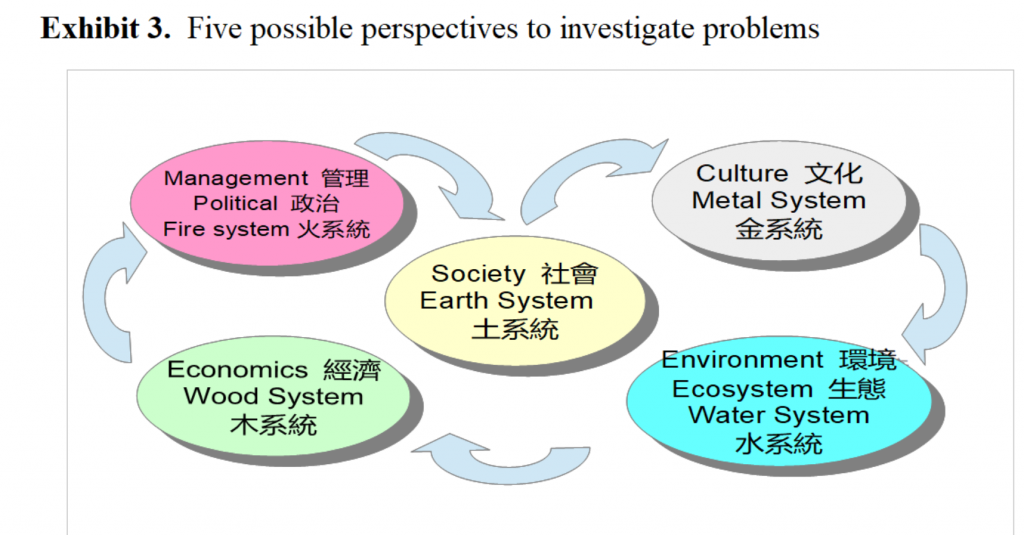
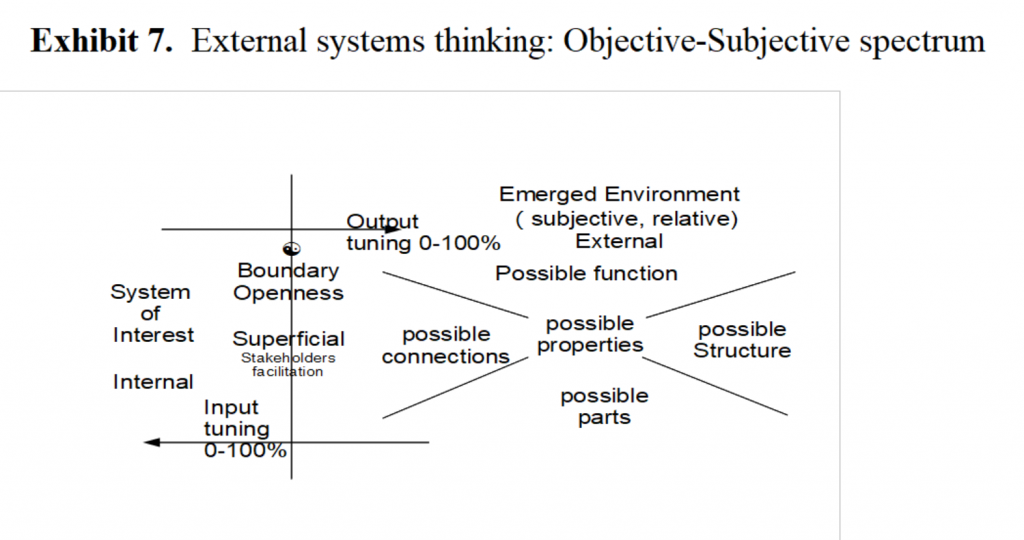
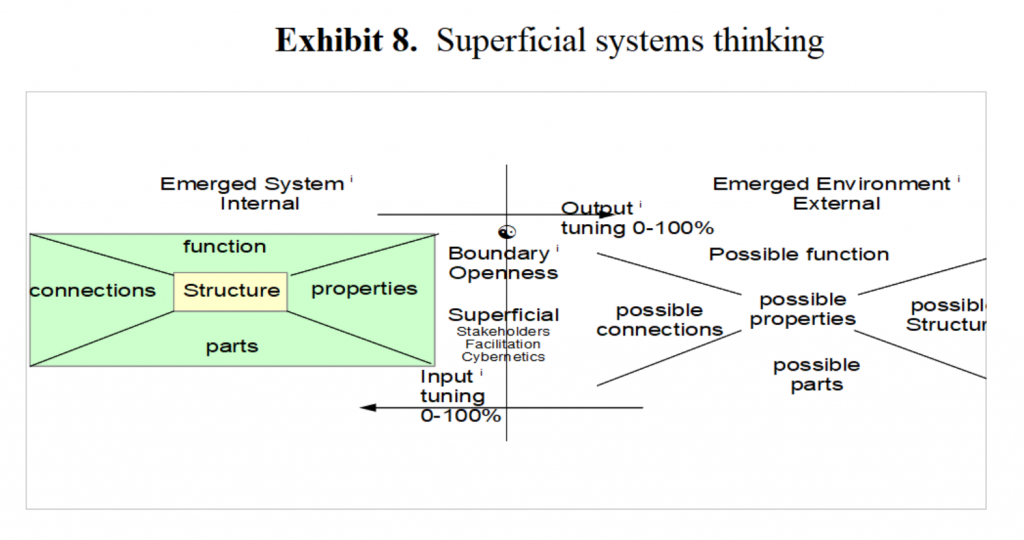
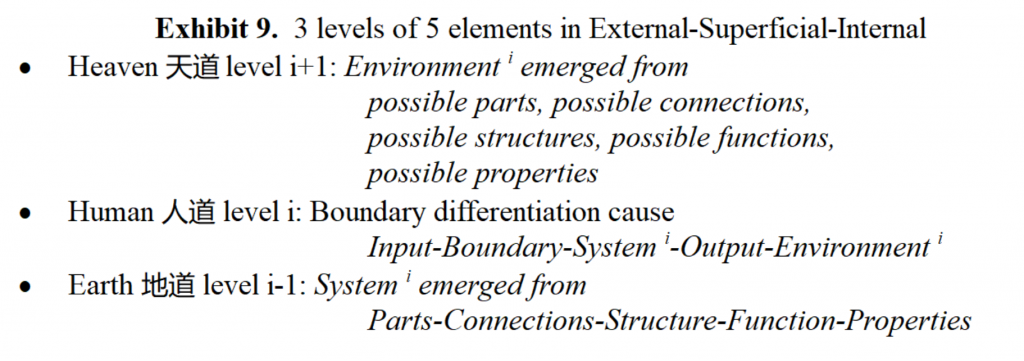
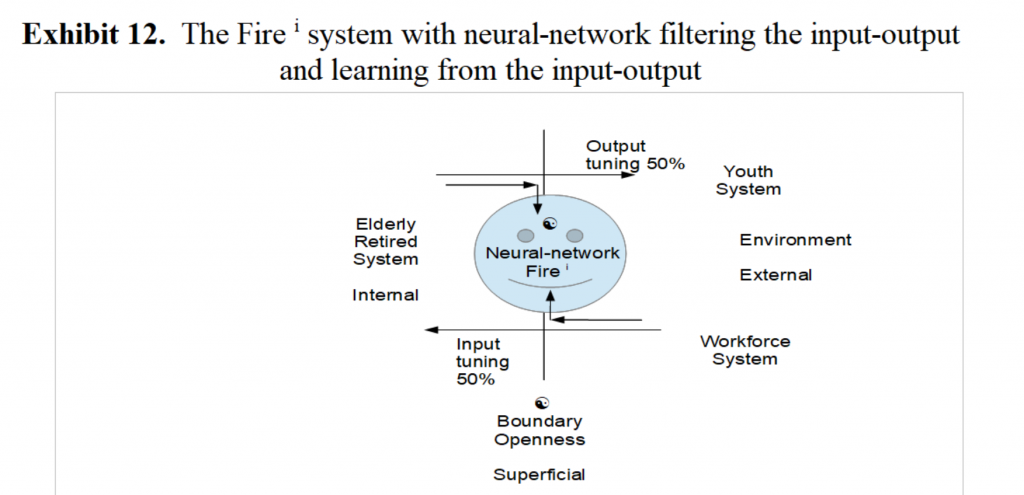

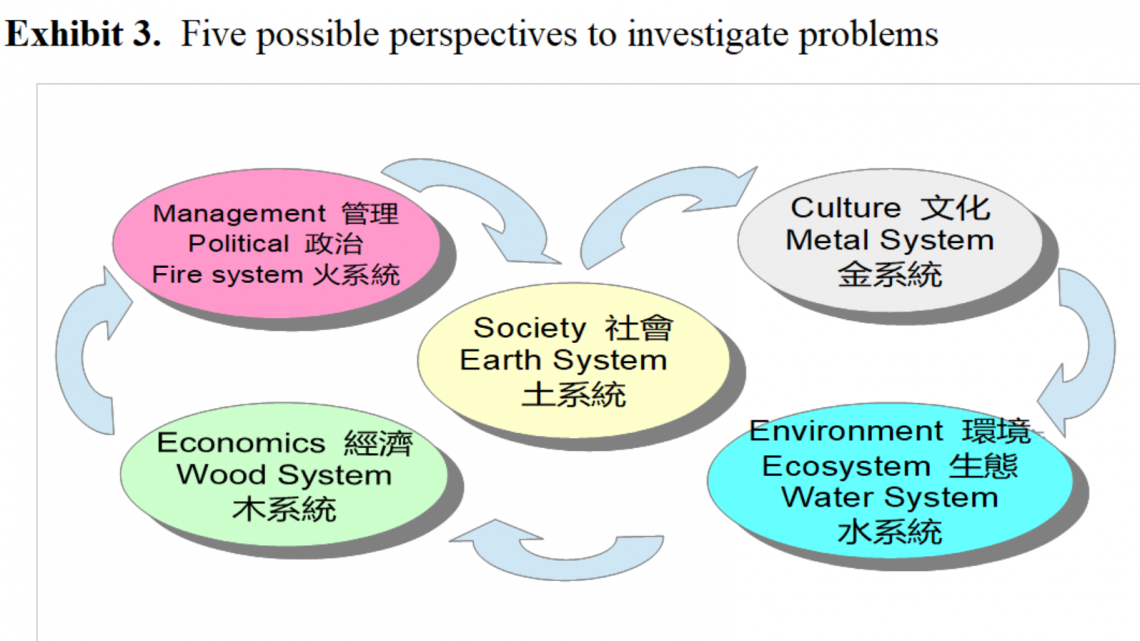
 古中醫學會心對心
古中醫學會心對心 微博 炎黃子孫共振中醫
微博 炎黃子孫共振中醫 古中醫教育中心面對面
古中醫教育中心面對面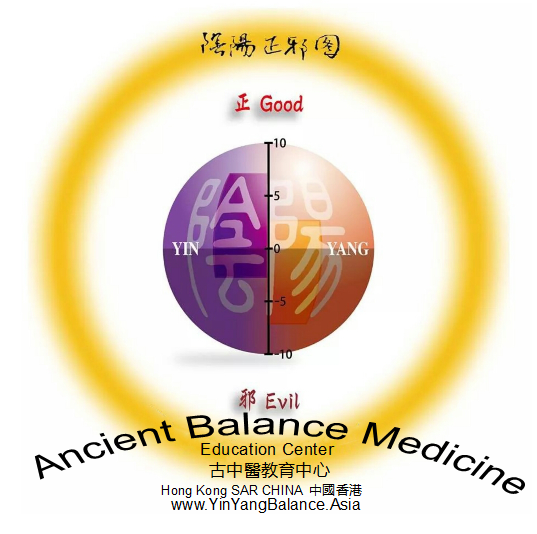 古中醫教育中心 Our Website
古中醫教育中心 Our Website